The Mechanised Transport Corps—Part 1: The Early Years
As part of a project looking at honours and awards to some of the women’s services, I came across an article about the award of the Croix de Guerre to British women volunteers of the Mechanised Transport Corps who had served with the French Army during the Battle of France in 1940. Intrigued I did a bit of digging but with little result—most of the available sources online are scanty in their detail and many conflate the various components of the M.T.C. As is often the case, a search of the British Newspaper Archive provided many good leads and those led to a visit to the Library of Congress to read some long-out-of-print memoires. This is the first of four articles about this most interesting volunteer organisation. For details of the honours and awards to the M.T.C. see here.
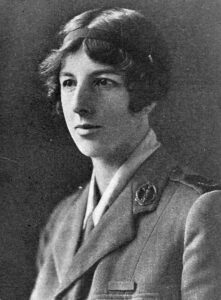
Edith, Marchioness of Londonderry D.B.E.
Founder of the Women’s Legion.
The Mechanised Transport Corps had its origins in the motor transport section of the Women’s Legion that remained independent after the formation of the Women’s Army Auxiliary Corps in 1917; it served with great distinction in the United Kingdom and then in France after the Armistice. The section continued on a much smaller scale after the war and in 1927 the Women’s Legion Motor Drivers was recognised by the Army Council as a voluntary reserve transport unit and took its place on the Army List, albeit unfunded by the War Office.[1] Throughout the inter-war years, the President of the Women’s Legion Motor Drivers was Lady Londonderry[2] (the founder of the Women’s Legion) and its secretary was Miss B. G. Ward O.B.E.,[3] both of whom had been recognised for their service during the First World War. In 1937 it was renamed Women’s Legion Mechanical Transport Section.
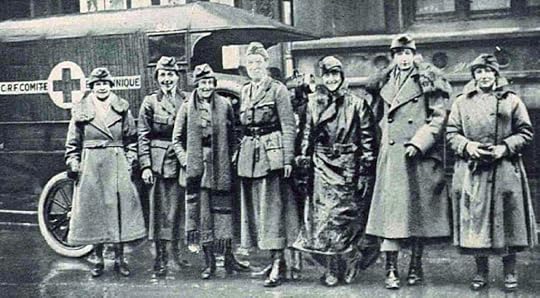
Women’s Legion Motor Drivers, 1918
Prior to the Second World War, in July 1937 Lady Londonderry proposed a ‘new’ Women’s Legion.[4] Beginning as an extension of the Women’s Legion Mechanical Transport Section, it began training in anti-gas drills, first aid, map reading and signalling at Regent’s Park Barracks in November that year. Aged between 18 and 40, its members were required to have a clean driving licence, paid a subscription upon enrolment and purchased their own uniforms. The unit established at Regents Park became No. 1 Company and was led by Mrs. G. M. Cook O.B.E., a driving force behind the transport section in the earlier war.[5] Early success led to a plan in January 1938 to expand the organisation to provide many more women capable of driving commercial transport in the event of a national emergency and recruitment soon began in earnest. Miss Ward commented, ‘There is no difficulty in finding women who can drive lorries… they are quite capable of driving large ambulances and lighter lorries. During the war they did it and they would be able to do it again.’[6]
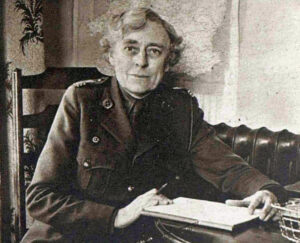
Mrs. G. M. Cook O.B.E
Corps Commandant, Mechanised Transport Corps
On 6 May 1938, at a meeting chaired by Major General Sir John Brown,[7] Deputy Director General Territorial Army, and attended by representatives of the principal women’s voluntary emergency organisations,[8] the foundation was laid for the formation of what would become the Auxiliary Territorial Service, the women’s branch of the British Army. The formation of the A.T.S was announced in September 1938 and it quickly subsumed the various women’s organisations with the exception of the Women’s Legion Mechanical Transport Section which was able to maintain its independence as a volunteer organisation.
With its headquarters at 33 Leinster Gardens, Bayswater and under Mrs. Cook’s leadership it began further recruitment. It was renamed the Mechanised Transport Training Corps in early 1939 but in early 1940 ‘Training’ was dropped from its title. The M.T.C. expanded quickly and at its height comprised over 3,000 personnel organised into companies in 12 regions.[9] It proved very popular with women ineligible for service with the armed forces and married women with family commitments.
The women of the M.T.C were uniformed in the style of A.T.S. officers (which caused some controversy) with their uniforms piped in blue.[10] A distinctive badge was worn on the uniform cap and tunic lapels. The brass cap and lapel badges of the M.T.T.C. comprised crossed open-ended spanners on top of a vehicle tyre with the letters ‘M’ & ‘T’ on the top spanner ends and ‘T’ & ‘C’ on the bottom spanner ends. On the lower edge of the tyre was the motto ‘PRO PATRIA’ (‘For One’s Country’). After the change of name, the second ‘T’ was removed and the ‘C’ moved to the centre of the crossed spanners. Buttons were plain with an embossed fleur-de-lis under the letters ‘M T C’. In time, several different armbands, badges and lapel flashes were worn by components of the M.T.C. linking them to the organisation for which they worked or to indicate wartime service in France. Officers’ rank badges were a combination of five-pointed stars, roses and gold bars.[11] (See the gallery below.)
In the early part of the Second World War the M.T.C. provided drivers for Civil Defence organisations and the Home Guard. Notable amongst the former were the women of an M.T.C. company who volunteered to drive the Lambeth Borough Council Air Raid Precautions’ stretcher parties. Two drivers, Maisie Coppock and ‘Denny’ Goodbody,[12] were awarded the British Empire Medal for their bravery in the aftermath of an air raid. The incident occurred at 7.45p.m. on 15 October 1940 at Morley College, Westminster Bridge Road in Lambeth, which was being used as an emergency rest centre by Lambeth Borough Council and at the time of the attack held 193 people, many of whom had lost their homes. It was struck by a single bomb that demolished much of the structure and killed 57 people. Three men of an A.R.P. stretcher party and the two drivers dug a tunnel with their hands and freed about 14 people, passing them from one to another. Later, Goodbody was separated from the group and assisted a rescue party that had made a tunnel that was too small for any of the men to get through. She volunteered to try and was able to wriggle through to a trapped woman but heavy rubble resting prevented her rescue; the woman was extracted later after another opening was made. The three men of the stretcher party were also awarded the B.E.M.
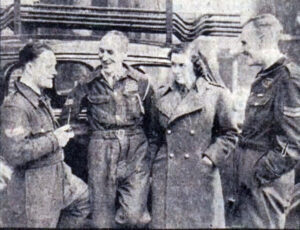
Mr. Richard Rance B.E.M., Mr. Norman Jaeger B.E.M. (Leader), Mrs. Mary Denise Goodbody B.E.M. and Mr. Alexander Muirhead Kerr B.E.M.; Air Raid Precautions, Lambeth
No fewer than four women of the M.T.C. were killed during the Blitz, recorded as ‘Civilian War Dead’ by the Commonwealth War Graves Commission:[13]
Eileen Knocker,[14] a nurse and midwife who had served in France during the First World War with a Voluntary Aid Detachment, was killed at Trebovir Road, Earl’s Court during an air raid on 24 September 1940; 10 others were killed in the blast.
Mrs. Eve Ellerbeck,[15] an assistant company leader based at No. 2 Stretcher Party Station, South Lambeth Road School, was killed in an air raid on 5 November 1940 when the station was hit; eight A.R.P. stretcher bearers stationed there were also killed, as were several civilians taking shelter.
Mrs. ‘Molly’ Orton,[16] and Mrs. Patricia Parley[17] were killed in an air raid on 17 February 1941 when a bomb hit the house on South End Road, Hampstead in which they were staying with Parley’s mother, Adelaide, Lady Moore who was also killed, as was the housekeeper Mrs. Rebecca Henry.
Elsewhere during the Blitz, the organisation provided a considerable number of drivers for American Ambulance Great Britain, a fleet of vehicles paid for by donors in the United States that provided ambulances, mobile first aid posts and mobile surgical teams in areas suffering air raids. By the end of the war the responsibility for running the organisation’s 27 stations was split almost equally between the M.T.C. and A,A.G.B. The M.T.C. also drove for the Queen’s Messenger Convoys (the ‘Food Flying Squad’) made up of vehicles, mostly donated by the British War Relief Society of America, managed by the Ministry of Food and staffed by the Women’s Voluntary Service that provided canteen services in bombed towns and cities. By November 1941 22 convoys were in operation, each comprising three mobile canteens, two food lorries, two kitchen lorries, a water carrier and a staff liaison car.
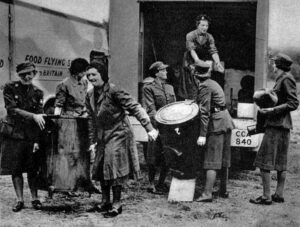
W.V.S. and their M.T.C. drivers of the Queen’s Messengers Convoy.
Increasingly, drivers were provided for various government ministries, the Blood Transfusion Service,[18] and the exiled governments and forces of Allied nations, notably for elements of the United States forces that began to arrive in 1942. The highest profile of these was probably Mrs. K. H. M. ‘Kay’ Summersby who drove for General Dwight D. Eisenhower, the Supreme Allied Commander of the Allied Expeditionary Force, earning her the British Empire Medal.
While well-regarded in Great Britain in the early years of the war (although as will be seen in a later article, not without some criticism), it would be the accolades earned during the Battle of France that would cement the reputation of the M.T.C.
Part 2—The Battle of France. (To follow.)
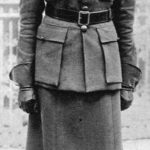
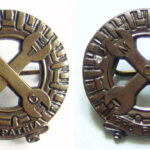
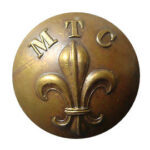
1. (Back) Army Order 180 of 1927 recognised the Women’s Legion Motor Drivers on the same terms as those approved by Army Order 94 of 1927 in the case of the First Aid Nursing Yeomanry (Ambulance Car Corps), i.e. ‘…for service in any national emergency, either as a unit or, in the event of a Women’s Reserve being organized, as individual members of that reserve. The corps will receive no financial assistance from army funds.’
2. (Back) Edith Helen Vane-Tempest-Stewart D.B.E., Marchioness of Londonderry. (3 December 1878-23 April 1959.)
D.B.E. (Civil Division). Edith, Marchioness of Londonderry. Founder of the Women’s Legion. LG 24 August 1917; 30250, p. 8794. (Award transferred to the Military Division in LG 23 January 1920; 31750, p. 963.)
3. (Back) Miss Beatrice Gascoigne Ward O.B.E. (26 August 1876-14 October 1970.)
M.B.E. (Civil Division). Miss Beatrice Gascoigne Ward. Deputy Commandant, Motor Section, Women’s Legion. LG 1 January 1918; 30460, p. 407. (Award transferred to the Military Division in LG 15 April 1919; 31296, p. 4990.)
O.B.E. (Military Division). Miss Beatrice Gascoigne Ward. Assistant Commandant, Women’s Legion. LG 3 June 1919; 31377, p. 6994.
4. (Back) Not to be confused with the Women’s Section of the British Legion, also known colloquially as the ‘Women’s Legion’.
5. (Back) Mrs. Grace Muriel Cook (née Barnes; divorced 1920) (27 February 1881-1November 1970), a pre-war suffragette, was an Assistant Commandant in the Women’s Legion during the First World War responsible for the Women’s Legion Motor Drivers.
O.B.E. (Military Division). Assistant Commandant Grace Muriel Cook. Women’s Legion Motor Drivers, Army Service Corps. In recognition of valuable services rendered in connection with Military Operations in France and Flanders. L.G. 12 December 1919; 31684, p. 15452.
6. (Back) ‘Women Wanted To Man The Lorries’ Manchester Evening News, 3 January 1938.
7. (Back) Later Lieutenant General Sir John Brown K.C.B., C.B.E., D.S.O., T.D., J.P., D.L., F.R.I.B.A., F.R.I.C.S.
8. (Back) Women’s Legion, Mechanical Transport Section—Lady Londonderry;
Women’s Transport Service (F.A.N.Y.)—Mildred Hogg, Viscountess Hailsham and Commandant Miss Mary Baxter Ellis;
Voluntary Aid Detachment Council—Dame Beryl Oliver D.B.E., R.R.C., Lady Oliver and Ethel Perrott R.R.C., Lady Perrott;
Women’s Emergency Service—Dame Helen Gwynne Vaughan G.B.E.;
Women’s Section of the British Legion—Miss Dorothy Niven Gerds.
9. (Back) Aligned with the Civil Defence regions. Region 1 – Northern, Region 2 – North Eastern, Region 3 – North Midland, Region 4 – Eastern, Region 5 – London, Region 6 – Southern, Region 7 – South Western, Region 8 – Wales, Region 9 – Midland, Region 10 – North Western, Region 11 – Scotland, Region 12 – Northern Ireland.
10. (Back) A detailed study of the uniforms and badges of the M.T.C. is apparently provided here: Mills, J. (2008). Within the Island Fortress: The Uniforms, Insignia & Ephemera of the Home Front in Britain 1939-1945, No. 4: The Mechanised Transport Corps (MTC). (Orpington, Kent: Wardens Publishing, 2008). This is a rare book and I have not seen a copy.
11. (Back) Rank badges evolved into this arrangement:
Ensign—one star
Lieutenant—two stars
Captain—three stars
Commander—one gold bar with a rose above
Commandant—two golds bar with a rose above
Senior Commandant—one gold bar with a fleur de lis above
Staff Commandant—two gold bars with a fleur de lis above
The Corps Commandant—three gold bars with a fleur de lis above
12. (Back) Driver (Miss) Maisie Eirene Coppock and Driver (Mrs.) Mary Denise Goodbody, Air Raid Precautions, Lambeth.
13. (Back) Being civilians, those who died in circumstances other than by enemy action are not commemorated by the C.W.G.C in any fashion. One other example is known: Miss Priscilla Corry Gotto, serving with the Ministry of Supply and travelling home to Belfast, was killed when United States Army Air Forces Boeing B-17-G Flying Fortress, serial 43-38847, en route from Stanstead to Royal Air Force Langford Lodge crashed at Dhustone Quarry, Clee Hill, Shropshire. All three crew-members and three passengers were killed. She is buried in Belfast City Cemetery, Glenalina Extension.
14. (Back) Driver (Miss.) Eileen Agnes Charlotte Knocker Driver is buried at Croydon Cemetery.
15. (Back) Ensign (Mrs.) Doris Lilian Eve Ellerbeck (née Hill) was cremated and her ashes buried in the grave of her husband’s grandfather at Chipperfield.
16. (Back) Driver (Mrs.) Florence Margaret ‘Molly’ Orton (née Fisher; widow of Sub-Lieutenant F. H. J. Orton, Royal Naval Reserve killed in action on 23 November 1939 when H.M.S Rawalpindi was sunk). Mrs. O. M. Sherington represented the M.T.C. at her funeral, although the place of burial is unknown. Her mother-in-law, Mrs. Bertha Orton, the leader of the theosophical ‘Group for Sacrifice and Service’ was killed in an air raid on 11 May 1941 at 43 York Terrace, where ninety-nine people prayed to the moon for peace; 14 others were killed.
17. (Back) Driver (Mrs.) Doreen Patricia Parley (née Moore; daughter of Major General Sir John Moore, K.C.M.G., C.B., F.R.C.V.S). The remains of Patricia Parley were not recovered until July 1948 during rebuilding work. She is buried with her mother and father at Quainton Churchyard, Buckinghamshire.
18. (Back) Organised nationally by the British Red Cross Society until taken over by the Emergency Medical Service of the Ministry of Health in 1940.



